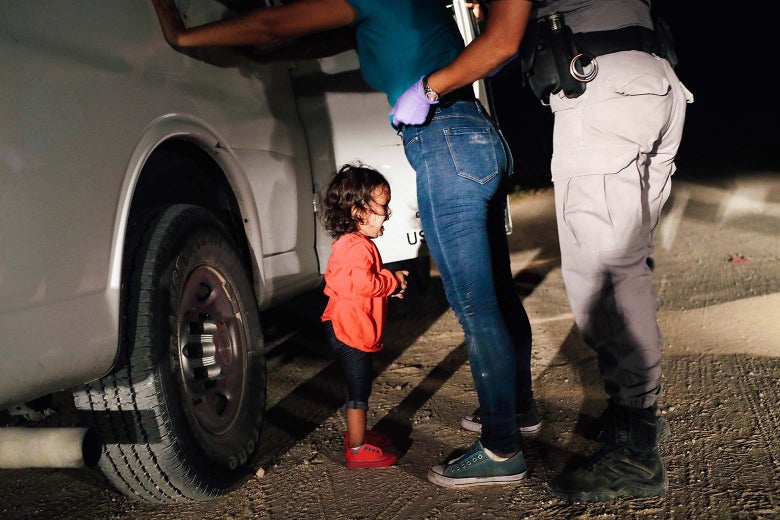
The United States government launched a new, and to many eyes and ears, fascist program for asylum seekers and people crossing into the United States. Touting questionable lines from the Bible and making false claims about the law, Trump and Sessions have proudly announced a zero-tolerance program, ignoring the catastrophic history of such programs in the past, in which everyone is charged with a criminal offense and sent to Federal prison. If they are with children, the children are taken from the parents, often by force, and sent off, with the excuse that “the law” says that children can’t go with their parents to prison. There is no such law, but that doesn’t matter. What matters is `deterrence.’ What matters is the imposition of force and violence on the most vulnerable.
Stores have been turned into giant child detention centers, and military bases are being turned into child prison camps. One former store in Brownsville, Texas, is currently holding 1500 boys… or it was a week ago. Today, probably more. According to Rochelle Garza, an immigration attorney based in Texas, “What’s happening is atrocious. It’s really unbelievable to separate a child from their parents, children as young as five. The parents don’t know where their child ends up. They’re being pushed through the criminal system and immigration system without any knowledge of where their children are and their children don’t know where their parents are. That’s against the whole point of unaccompanied minor reunification process. The whole thing is garbage right now. The kids are not being sent to any parent. It doesn’t make any sense.” Meanwhile, prison staffs and administrators are complaining that they’re not ready to “handle” the influx of children. Children.
Where are the girl refugees, asylum seekers, children in this unholy mess? We see pictures, such as the one above, of girl infants, toddlers, children weeping, crying, screaming, trembling, and then … they’re gone. Into the night and fog. Where are the girls? Is anyone paying any attention to the specific needs and identities of girl children? Yesterday, the Office of Refugee Resettlement updated its “Fact Sheet”. Here’s the one sentence that in any way alludes to gender: “In FY 2017, approximately half of all children referred were over 14 years of age, and over two-thirds were boys.” That is the full extent of the Office’s concern for girls. Nothing. Less than nothing.
Children and parents are entering the United States together. The children are not “unaccompanied minors” until they are ripped from their parents’ arms, arms which lovingly protected them on the long and arduous journey to the north. Now those children are being shipped like so much freight, sent hither and yon across the country with less than no regard for the children or for their parents or grandparents. In response, the State quotes the Bible. Where are the girl refugees, asylum seekers, children in this unholy mess? A specter haunts the United States, and it is that of the disappeared.
(Photo Credit: Slate / John Moore / Getty)